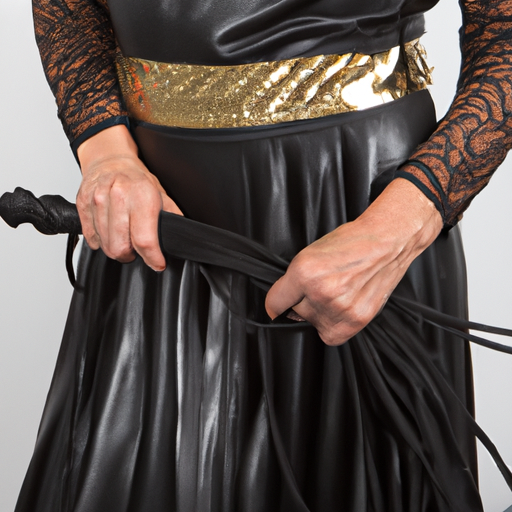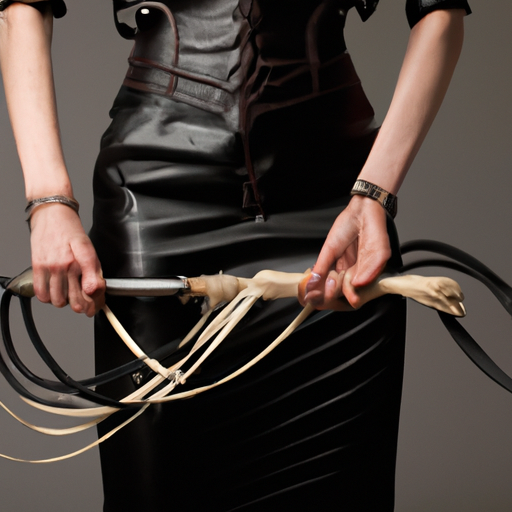What Does the Term ‘Mistress’ Mean in the Context of BDSM?

In the realm of BDSM (Bondage, Discipline, Sadism, and Masochism), a diverse and intricate world of power dynamics, roles, and fetishes, the term ‘mistress’ holds a significant place. It represents a distinct role within the BDSM community, embodying power, authority, and dominance. While the word ‘mistress’ might evoke different images and associations outside of the context of BDSM, it takes on a unique meaning within this realm.
At its core, a mistress in BDSM refers to a female dominant, someone who takes charge and exercises control over their submissive partner(s). The role of a mistress can vary depending on the dynamics and desires of the individuals involved. However, there are a few common elements that define the role and its significance.
Authority and Dominance:
As a central theme in BDSM, authority and dominance play a crucial role in the mistress-submissive dynamic. The mistress assumes a position of power, dictating the rules, boundaries, and activities within the relationship. This power exchange is consensual and driven by mutual trust and negotiation between the individuals involved. The mistress uses her authority to guide, discipline, and fulfill the submissive’s desires within the agreed-upon limits.
Exploring Fantasies and Fetishes:
Within the realm of BDSM, individuals often have specific fantasies and fetishes that they wish to explore. The mistress takes on the responsibility of orchestrating these experiences, creating a safe and consensual space for both partners to explore their desires. Whether it involves bondage, role-playing, impact play, or any other form of kink, the mistress uses her expertise and creativity to bring these fantasies to life.
Emotional and Psychological Connection:
While BDSM is often associated with physical activities and sensations, the role of a mistress goes beyond that. It involves building a deep emotional and psychological connection with the submissive partner. Trust, communication, and empathy are crucial elements in this relationship. The mistress must understand and cater to the needs and boundaries of the submissive, providing a space where they can truly let go, surrender control, and experience intense pleasure.
Training and Discipline:
One of the significant aspects of the mistress-submissive relationship is the element of training and discipline. The mistress takes on the responsibility of shaping and molding the submissive’s behavior, guiding them towards personal growth and self-discovery. This can involve setting rules, enforcing punishments, and rewarding positive behavior. Through this training, the mistress helps the submissive explore their limits and push past them in a safe and consensual manner.
Beyond the Bedroom:
While the mistress-submissive dynamic often takes place within the bedroom, it can extend beyond that. For some individuals, the relationship with their mistress is not limited to sexual encounters but encompasses a more holistic and 24/7 power exchange. In these cases, the mistress assumes a dominant role in various aspects of the submissive’s life, such as decision-making, daily routines, and even financial matters. This level of commitment and submission requires a deep level of trust and understanding between both partners.
It is important to acknowledge that the dynamics and interpretations of BDSM relationships, including the role of a mistress, can vary greatly from person to person. Consent, communication, and respect are the pillars upon which these relationships are built. It is essential for individuals engaging in BDSM activities to have open conversations, establish clear boundaries, and continually check in with each other to ensure a safe and consensual experience.
In conclusion, the term ‘mistress’ in the context of BDSM represents a powerful and dominant female figure who takes on the responsibility of guiding, disciplining, and fulfilling the desires of her submissive partner(s). The mistress-submissive dynamic is based on trust, communication, and mutual consent, allowing individuals to explore their deepest fantasies and fetishes within a safe and consensual space. Click Here.
How do femdom cartoons challenge societal norms and expectations?
In recent years, the world of cartoons has expanded to include diverse and unconventional themes, pushing the boundaries of societal norms and expectations. One such genre that has gained popularity is femdom cartoons. Femdom, short for female domination, refers to the depiction of women in dominant roles, challenging traditional gender dynamics. These cartoons not only provide entertainment but also serve as a platform to challenge and question deeply ingrained societal norms. In this blog post, we will explore how femdom cartoons challenge societal norms and expectations.

Femdom cartoons, like any other form of media, have the power to shape our perceptions and challenge existing norms. By portraying women in positions of power and authority, these cartoons challenge the conventional notion that men are always dominant and women are submissive. They provide an alternative perspective, promoting gender equality and female empowerment. This is particularly significant in a society where gender roles and expectations often limit opportunities for women.
One way that femdom cartoons challenge societal norms is by subverting traditional gender roles. Historically, men have been portrayed as strong, assertive, and dominant, while women have been relegated to submissive, nurturing roles. Femdom cartoons reverse these roles, showcasing women as confident, assertive, and in control. This challenges the deeply entrenched gender stereotypes that have long dictated societal expectations.
Furthermore, femdom cartoons provide a space for exploring diverse sexualities and preferences. Traditionally, male dominance has been linked to societal expectations of masculinity, while female submission has been associated with femininity. Femdom cartoons challenge these assumptions by highlighting the existence and validity of different power dynamics and sexual preferences. They create a safe and inclusive environment where individuals can freely explore their desires without judgment or shame.
Additionally, femdom cartoons can be seen as a form of escapism and fantasy. Many individuals find solace and empowerment in engaging with these cartoons, as they provide an outlet for exploring desires and fantasies that may not be easily expressed in everyday life. By depicting women in positions of power, these cartoons offer a sense of liberation from societal constraints, allowing individuals to explore different aspects of their sexuality and identity.
It is essential to note that femdom cartoons should not be viewed in isolation but rather as part of a broader movement towards gender equality and inclusivity. These cartoons contribute to a larger conversation about challenging societal norms and expectations, encouraging individuals to question and critically examine existing power structures.
However, it is crucial to approach femdom cartoons with a nuanced perspective. While they can be empowering and liberating for many, it is essential to recognize that not all individuals may find them appealing or reflective of their desires. As with any form of media, it is important to respect individual preferences and boundaries.
In conclusion, femdom cartoons challenge societal norms and expectations by subverting traditional gender roles, promoting gender equality, and providing a space for exploring diverse sexualities and preferences. They offer a platform for individuals to question and critically examine existing power structures, contributing to a broader movement towards inclusivity and empowerment. While femdom cartoons may not be everyone’s cup of tea, they undoubtedly play a significant role in expanding the boundaries of societal norms and expectations.
